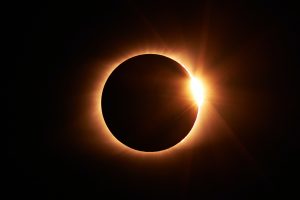Every year in October, Orionids are active, with a peak around October 20/21. Up to 20 meteor showers are observable every hour at their peak. The Draconids are this season’s first meteor shower, peaking around October 8 or 9.
The Orionid meteor shower is Comet Halley’s second meteor shower. The Eta Aquarids meteor shower in May is another result of Comet Halley’s debris. It takes Halley approximately 76 years to complete one rotation around the Sun. It will be observable again in 2061.
Orionid meteors are named after the cluster Orion because they appear to arise or radiate from the same location in the sky as the constellation.
How are Orionid meteor showers formed?
The Orionids are induced by ice and dust particles left behind by Halley’s Comet as it travels through the solar system. The meteors we see today, according to the UK Meteor Network, are made up of debris left by Halley’s Comet hundreds of years ago, as the comet’s current orbit does not bring it close enough to Earth to create meteors.
Also Read: Univ. of Michigan’s ZEUS will be most powerful laser in US
When Earth passes through comet debris, the “comet crumbs” burn up as they enter the Earth’s atmosphere, resulting in spectacular “shooting stars” that streak across the sky.
The comet is named after Edmond Halley, an English astronomer who investigated reports of comets approaching Earth in 1531, 1607, and 1682. He deduced that these spottings were of the same comet reappearing. The comet, according to Halley, was to return in 1758. Though he did not live to see the comet’s accurate return, it was later named after him.
Also Read: Draconid meteor shower 2022: When and where to watch?
How to watch the Orionids?
“Meteors will appear to originate from close to the star Betelgeuse in the constellation of Orion, which will be in the East of the sky during that peak time,” Anna Ross, Royal Observatory Astronomer, previously told Country Living.
According to Earth Sky, the Orionids are incredibly fast meteors that enter the Earth’s atmosphere at approximately 41 miles per second.





